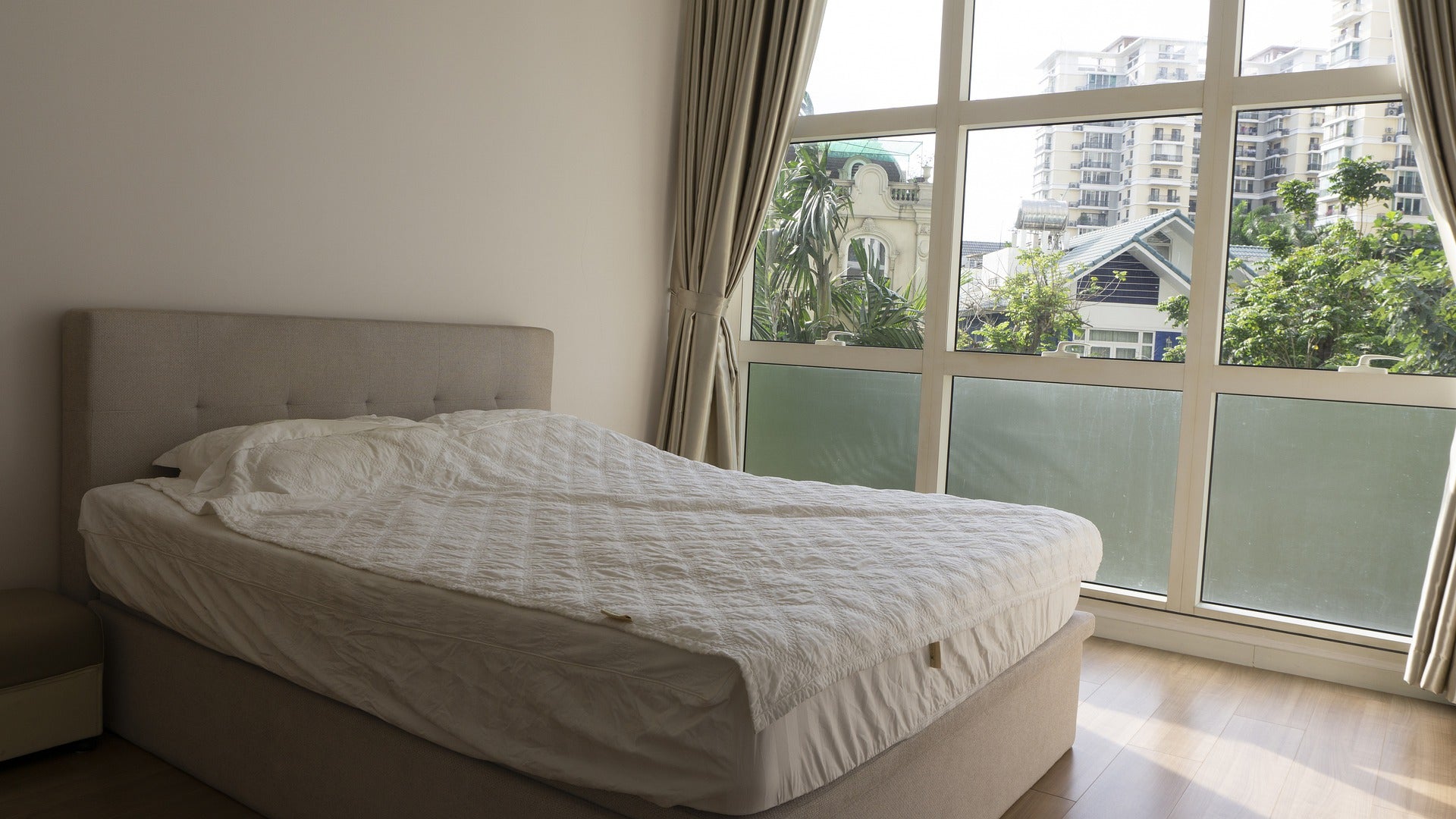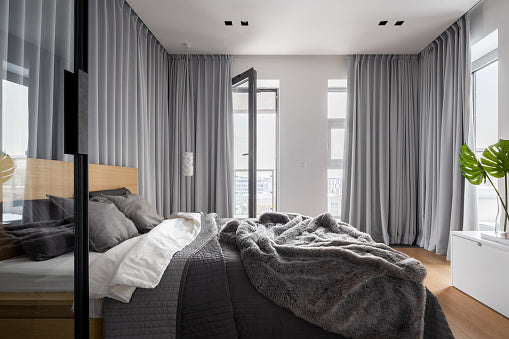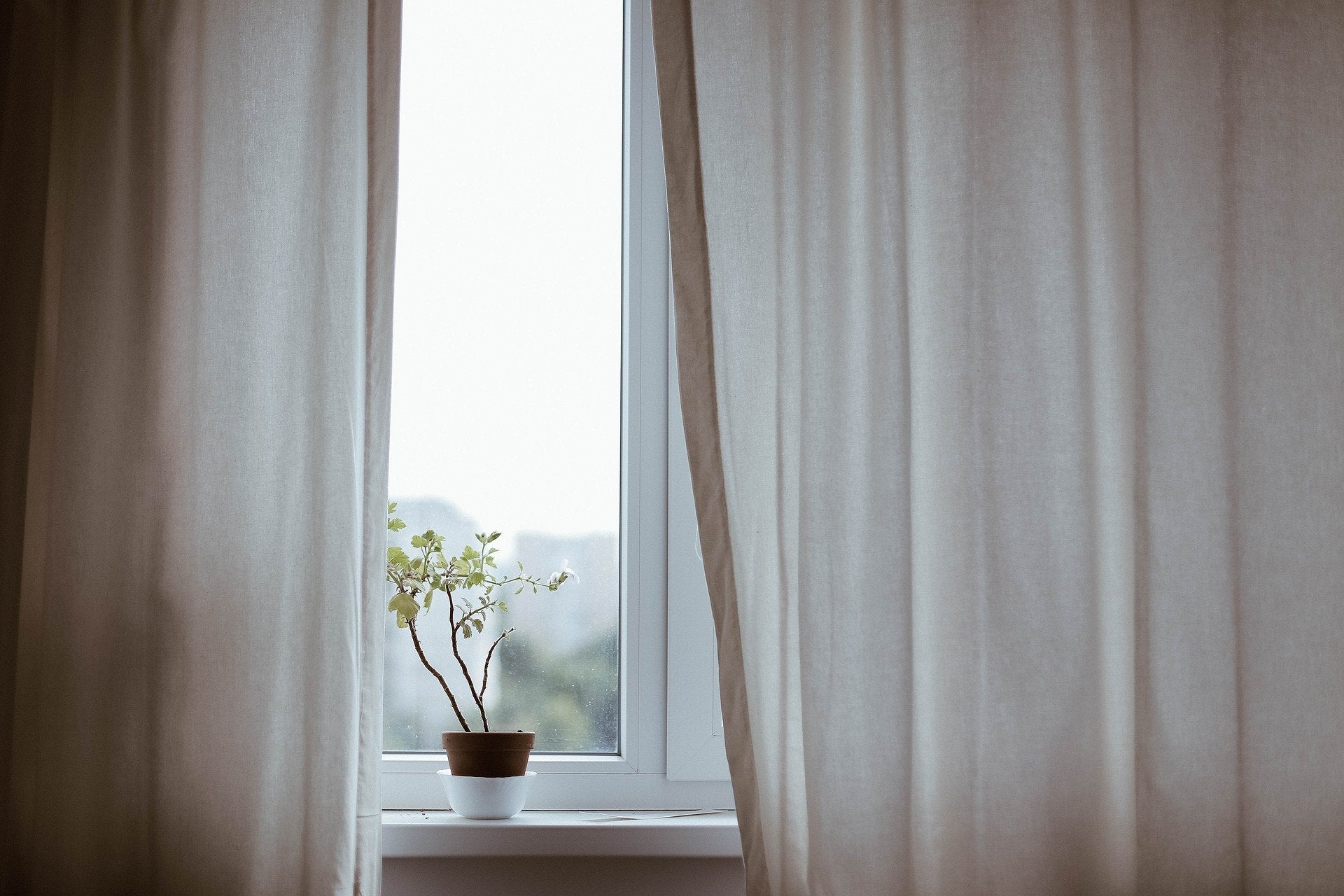
Blackout Curtains vs Room Darkening vs Light Filtering
You're in the market for some new curtains if you're weary of the light pouring through your window every day, upsetting your sound sleep and leading you to wake up on the wrong side of the bed. In addition, various curtains may give other areas of the house the ambiance or functionality you desire. This decision, however, is not as simple as it appears. Blackout curtains, room darkening curtains, and light filtering curtains all solve the same problem, but each has advantages and disadvantages. Here's a guide to each one, whether you need them for sleep, seclusion, etc.
Blackout Curtains
The sun's rays are blocked entirely by blackout curtains. These curtains are ideal for bedrooms, nurseries, dark spaces, and media/theatre rooms since they provide complete darkness. Because all of these curtains are made of dark or black materials, attaching them between the curtains is your best choice if you want a brighter colour scheme. White liners can be added for consistency as viewed from the street. You may use clips or a double rod to attach blackout curtains to your current drapes, whichever is most practical. Another fantastic advantage of blackout curtains is that they serve as a heat barrier for your home. This is especially useful when you want to keep your house warm.

Most thermal and blackout curtains are made of wool, one of the most sumptuous textiles for retaining heat. Because most heat escapes via your home's windows, this helps to limit the damage while also decreasing your electricity costs. If you hang your blackout curtains on the same rod as your drapes, you may see a halo of light around the edge. Multi-layer treatments are an option if you have this issue. These window solutions use blackout curtains in various sizes to create a light-blocking barrier. You won't have to worry about any light coming in after, it's appropriately put in, providing the complete darkness you need.
Room Darkening Curtains
Room darkening curtains are the answer when you desire a more muted look or feel than blackout curtains. These drapes do not transform a space into a cave. Instead, they let some light in but not enough to wake you awake. The liner, which isn't nearly as thick as the one found in blackout curtains, distinguishes these curtains from blackout curtains. You won't get the halo effect that blackout curtains do, but you'll still get enough light to meet your needs. Another advantage of room darkening curtains is that they may significantly decrease expenditures and wear and tear on household objects.
When drawn, room darkening curtains filter UV radiation that might elevate your home's temperature. You won't have to run the air conditioner all day in the summer, and after the sun sets, you can open the doors and windows to allow the cool air in. These sorts of curtains may limit the rays that harm wood flooring and furniture and lower your expenditures. The wood preserves its sheen and brightness without these rays, rather than having a dull, faded appearance.

Light Filtering Curtains
Light filtering curtains let in more light than blackout or room darkening curtains and provide a more pleasant alternative to typical drapes or blinds. The primary function of these curtains is to give seclusion in your dining room or living room while allowing you to get enough light without switching on lights. Light filtering drapes may be customized the same way as the other options. There are four varieties of them. Soft and smooth, chiffon drapes are sheer to allow the most light in. Twisted yarn curtains are wrinkle-resistant and dry rapidly after being washed. Light filtering curtains with vanes feature tiny holes that allow light to shine through, almost like blackout curtains.
Last but not least, vinyl mesh light-filtering drapes block UV rays while allowing some natural light in. The nice thing about light filtering curtains is that they may be used to complement existing curtains or drapes. Light filtering curtains are an excellent alternative to let some light in a while, saving money and maintaining your home design. Whichever curtains you pick, you want them to offer a splash of colour and complement your existing decor. Thankfully, each style is available in several designs, colours, and materials to suit your preferences.

Temperature
The ability to manage temperature and keep things snug and comfortable in our homes is one of the most important attributes we look for in window curtains. We may tailor them to our requirements and those of our home. Let's say you purchase a sheer curtain for its light-filtering properties. You have a lot of light in your room, which is just what you wanted. However, as temperatures have risen, the cloth is no longer thick enough to keep the heat out. What exactly do you do? You may either replace the curtain with a broader room darkening one or add an extra layer of material to it. You now have the option of using either layer at any time.
Privacy
The distinction between room darkening and blackout curtains is a fine line that separates the two types of window coverings. The goal of both is essentially identical: seclusion and temperature control. While room darkening curtains allow a tiny amount of light to flow through, blackout curtains are specifically designed to generate complete darkness when closed. They're designed to provide you with total seclusion and allow you to sleep well. Blackout curtains are designed to block 100 percent of the sun's rays while protecting you from glare and UV radiation, which may harm your skin and damage other objects in your home. Blackout curtains are perfect for window decorations and lining up outside rooms in locations where there is a strong need for little outside disturbance, such as nurseries, media rooms, studios, and conference halls.


